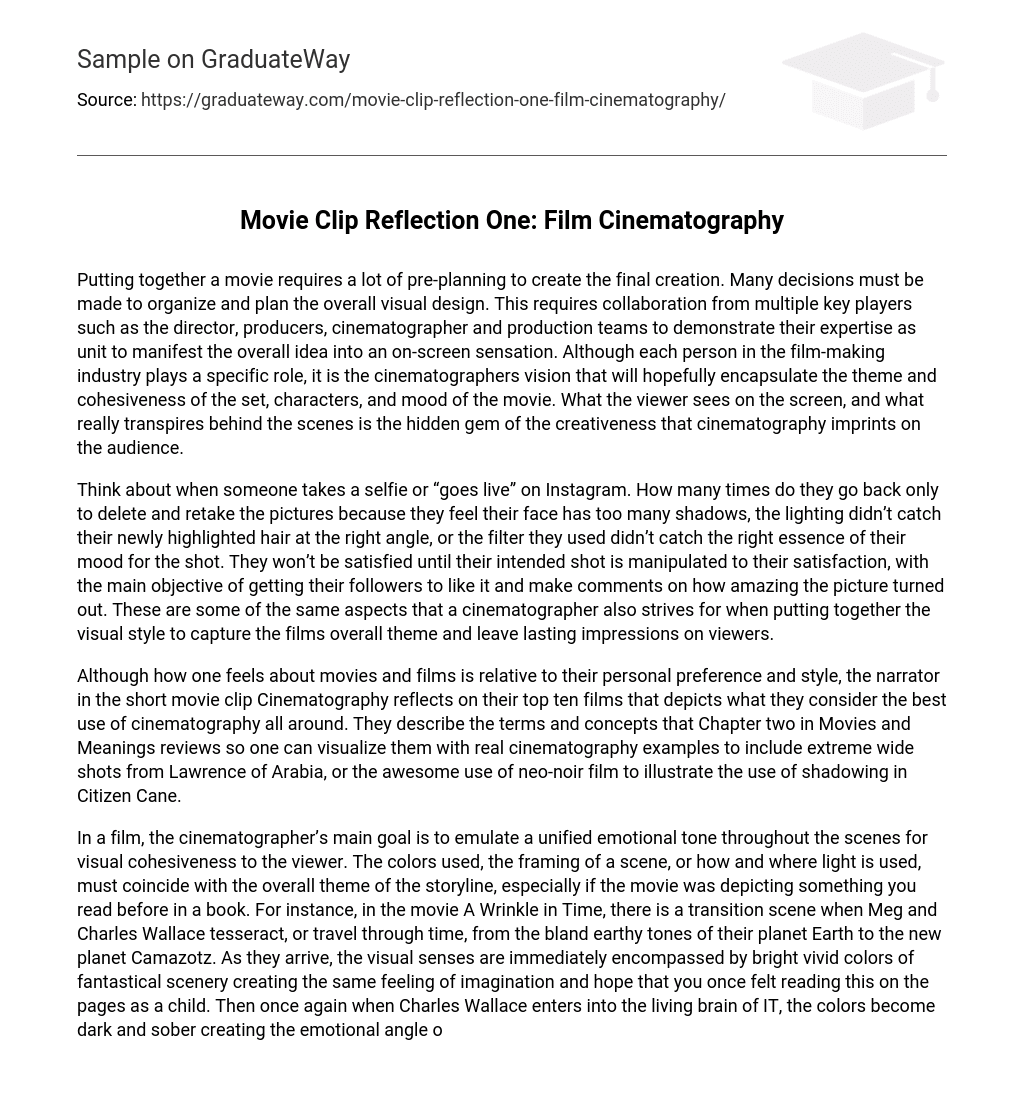Putting together a movie requires a lot of pre-planning to create the final creation. Many decisions must be made to organize and plan the overall visual design. This requires collaboration from multiple key players such as the director, producers, cinematographer and production teams to demonstrate their expertise as unit to manifest the overall idea into an on-screen sensation. Although each person in the film-making industry plays a specific role, it is the cinematographers vision that will hopefully encapsulate the theme and cohesiveness of the set, characters, and mood of the movie. What the viewer sees on the screen, and what really transpires behind the scenes is the hidden gem of the creativeness that cinematography imprints on the audience.
Think about when someone takes a selfie or “goes live” on Instagram. How many times do they go back only to delete and retake the pictures because they feel their face has too many shadows, the lighting didn’t catch their newly highlighted hair at the right angle, or the filter they used didn’t catch the right essence of their mood for the shot. They won’t be satisfied until their intended shot is manipulated to their satisfaction, with the main objective of getting their followers to like it and make comments on how amazing the picture turned out. These are some of the same aspects that a cinematographer also strives for when putting together the visual style to capture the films overall theme and leave lasting impressions on viewers.
Although how one feels about movies and films is relative to their personal preference and style, the narrator in the short movie clip Cinematography reflects on their top ten films that depicts what they consider the best use of cinematography all around. They describe the terms and concepts that Chapter two in Movies and Meanings reviews so one can visualize them with real cinematography examples to include extreme wide shots from Lawrence of Arabia, or the awesome use of neo-noir film to illustrate the use of shadowing in Citizen Cane.
In a film, the cinematographer’s main goal is to emulate a unified emotional tone throughout the scenes for visual cohesiveness to the viewer. The colors used, the framing of a scene, or how and where light is used, must coincide with the overall theme of the storyline, especially if the movie was depicting something you read before in a book. For instance, in the movie A Wrinkle in Time, there is a transition scene when Meg and Charles Wallace tesseract, or travel through time, from the bland earthy tones of their planet Earth to the new planet Camazotz. As they arrive, the visual senses are immediately encompassed by bright vivid colors of fantastical scenery creating the same feeling of imagination and hope that you once felt reading this on the pages as a child. Then once again when Charles Wallace enters into the living brain of IT, the colors become dark and sober creating the emotional angle of anger and evil. This is the power of cinematography.
As it states in Chapter two of Movies and Meanings, “the viewer wants to believe in the plausibility and integrity of the world that is represented on screen.” Seeing is believing, whether fantasy or not. The way the cinematographer uses the lights, film, angles or color tones, brings the viewer into each shot to achieve the desired outcome of the intended result. To think that from an idea or concept, the pre-production decisions that were made in the planning of a film, can result into award winning motion pictures that will be memorable for years to come.





